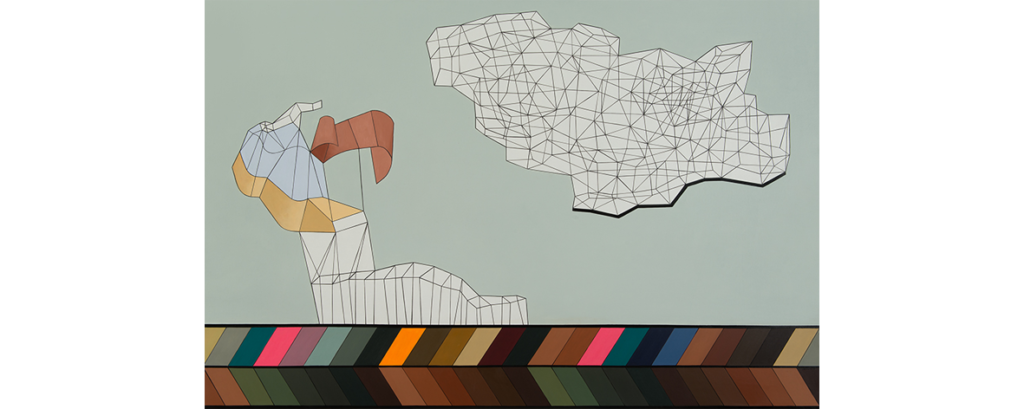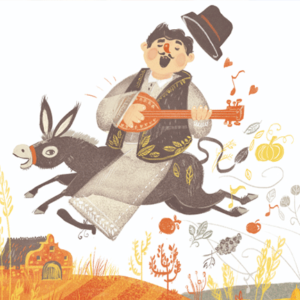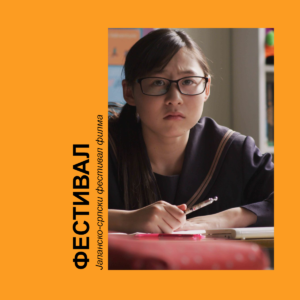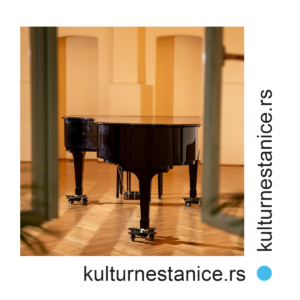The exhibition of works by Snežana Vujović Nikolić, ‘Guardians 8+8+8’ will be opened in the Svilara Cultural Station on Thursday, 20 August at 7 p.m. and audience will have a chance to follow the exhibition live via Facebook page of the Cultural Station.
The artist from Belgrade exhibited across country and abroad, and her paintings can be found in numerous public and private galleries and collections in Serbia and across the world.

As she says, the guardian as the topic presents all our knowledge, experience, success, and defeat. It also examines our role when reality changes. Number eight as a symbol presents the number of works: eight drawings, eight paintings and eight sculptures.
‘I presume that when some information is being put in the title itself, in this case, the title of an exhibition, it makes us think that it is about something very important. In this case, it is only about the number of works. Namely, 24 works will be presented on the exhibition: eight drawings, eight paintings and eight sculptures. The works have been designed in the period from 2011 until 2020 and they relate to the same topic, the notion of a guardian. I thought that the ‘8+8+8’ subtitle makes the title of the exhibition more interesting, even visually. Having in mind your question, I guess that I have got the point’, said Vujović Nikolić.
What type of works are those that will be exhibited in the Svilara CS? How will the exhibition look like?
I have to admit that I saw the whole exhibition when I entered the space for the first time. It was very interesting for me. Works under the same name Guardians will be presented within the ‘Guardians 8+8+8’ exhibition. This topic emerged from the thoughts about the existence and nature of powers and energies that lead us throughout the life, creation and understanding and exploration of world. Those who follow and know my work, know that the topic is present in all its phases. In this regard, the notion became part of my creative mythology in a way, although it is not my field of work, in that context.
Personally speaking, the Guardian as a topic is a very complex notion. On one hand, it presents our experience, knowledge, our success and defeat, everything we have achieved throughout the life and we brought with ourselves by birth, and everything inherited from generations before us. It also presents known and unknown irrational forces that are present around and within us (including the irrational nature of an artist). The topic also explores our role in changing the reality and responsibility it bears.
The guardians, as the force of nature, our spiritual wealth and knowledge, are presented on these works as fantastic creatures through abstract forms. In this manner, the things that we can imagine but cannot see, became visible. Despite its domination, the topic is only a transitional element. Above all, I am interested in aesthetics. The focus is always on re-examination of fine art problems within the work. The point of origin, the end goal is the experience within which I want to create new experience for everyone who appears in the field of its activity. I try to make conditions for it through re-examination of fine art problems within the work. I exhibited sculptures that were created this year on the exhibition for the first time.
What do think about unenviable position of artists regarding the pandemic? How much will it take for the art to recover from it?
Everything happened suddenly, and it was unexpected. We have not gone through similar experience so far. One important dimension of nature, harmony, is being disturbed, and not only with this event, but the nature will find its way to go through this experience and establish its value system again. We have to be aware that it will be a long process. It is hard to get the bigger picture. Altogether, the society lacks solidarity. We have to re-examine and rehabilitate co-existential code of ethics, especially during the crisis.
Material existence was always a problem to most of artists. Institutions have never seriously dealt with the way of networking of artists in social systems. The result is that they are the ones who are the most neglected in the situation like this. At the moment, the responsibility is much heavier. The society should, if possible, solve the problem through different systems of individual and collective activities. The awareness of it is inevitable. Whole cultural community should participate in it.
Due to the pandemic, many cultural contents are presented online, live-streamed, via different video and audio materials and platforms, how do you see this alternative method in order to reach the audience?
We are happy that technology enabled the accessibility of cultural contents in this manner. I think about both audience and artists. There is a lack of spontaneous experience, which is hard to replace, as well as the possibility to share it with others in the very moment. It is obvious that we have to change our habits, and they have been changing all the time. That is the nature of the world.
What are advantages and disadvantages of the ‘online culture’?
Online enabled the insights into numerous cultural events. Which is good. A great number of people can see and hear numerous cultural contents that were not available to them. For example, they can attend a concert that is taking place in other city or country. That possibility motivates artists, which is good for them and their creative work. This is also good for the audience, whose experience and knowledge are enriched in this manner. The audience develops critical thinking. Cultural stations should copy this model, despite the pandemic. This is an improvement for everyone.
Since you exhibited around the world, how do you see Novi Sad as the future European Capital of Culture comparing to other cities?
Novi Sad truly belongs to the institution called European Capital of Culture. Having in mind a great number of cultural institutions, which contribute to the cultural richness of the city with its great long-term experience, quality and complex content and richness and skill of creative endeavour, which manifests in preservation of different identities and their co-existence.
To what extent is the title Novi Sad has won important for the cultural image of the whole country? Do you think that Novi Sad can be a positive example to other cities?
Culture is omnipresent nowadays and it brazenly showed that you cannot live without it. It makes our lives richer, broadens horizons and erases borders we have formed, transcends differences, helps us understand each other better. It heals. The fact that Novi Sad has been declared the future European Capital of Culture makes me happy in the first place. The event is of great importance for Novi Sad and our country, and I also think that it is an important event for European culture, since culture is the richness that manifests in diversity. The experience Novi Sad has gained during the preparation of the event should be an inspiration for other cities in our country. It can help other environments to raise the level of their cultural contents and activities at higher level, thus enabling community to develop.
The ‘Guardians 8+8+8’ exhibition will be open until 27 August, adhering to the measures in order to prevent spreading of the COVID-19 virus.






